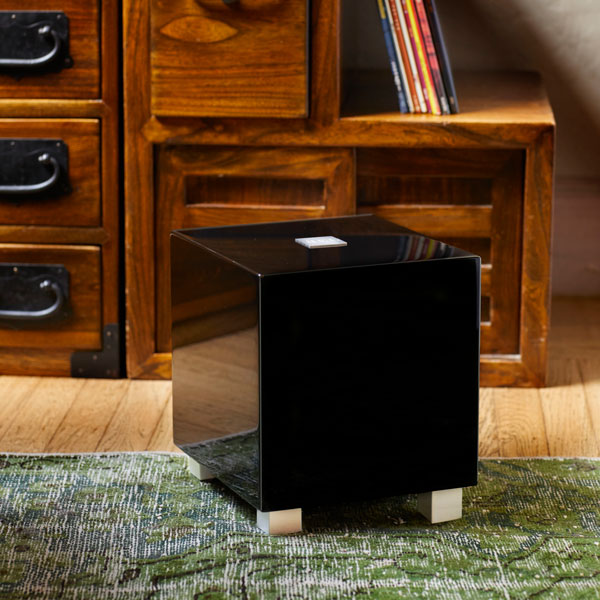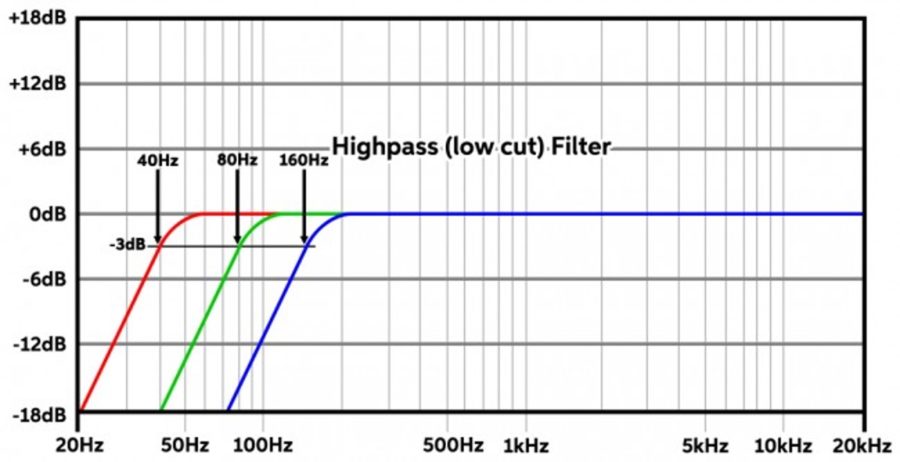Blog
What is a High Pass Filter in a Subwoofer?

The first half of the question is easy, the second gets into some very important thought about what a subwoofer is and where it should leave off and your loudspeakers start earning their keep. REL thinks of this issue differently and with more respect for the artists of all genres– the musical artists, the film sound engineers and the speaker designers who created your speaker– as uniquely gifted artists who bring you a truly magical experience. We’ll get into more on that later in the post.
What Is A High Pass Filter And What Does It Do?
Let’s start with, what is a High Pass Filter? Well, the name says it all, a High Pass Filter allows the higher frequencies to pass through. All sound systems begin with a Source component. Could be a CD player, these days it’s more likely to be streamer, might even be a smart phone sending information via BlueTooth to your system. Whatever its origins—and for pure sound quality of the ones I listed, the better CD players and transport/DACs still provide the best sound by a significant margin – sound emerges from the source, travels through the electronic heart of your system to your speakers.
Even if you are unaware of them, receivers have preamps and power amps within. Integrated amps simply combine a preamp and stereo power amp into one chassis. Most of the highest quality systems have separate preamplifiers and power amplifiers, since that permits the greatest range of freedom to sculpt the sound exactly the way their owners want to hear it, since each component has its own sonic signature. From there, the sound travels down speaker cables, FULL RANGE, to your loudspeakers.
A High Pass Filter is inserted between the preamplifier and power amplifier—it lives in our competitor’s subwoofers–– and it cuts out the bass. First, let me make the argument for why these filters exist because, on paper, it sounds attractive. By inserting a High Pass Filter, it is possible (in theory) to restore 3 decibels of loudness to your system and relieve the stress of low bass being produced by your speakers. That is largely true, although one can quibble about whether the speakers involved can truly handle that additional output. But for now, let’s agree that those are the stated benefits.
What they don’t tell you is that by attempting to maximize the decibels, you can destroy the carefully acquired sonic qualities of those speakers you likely paid handsomely for. This is especially true the better your speakers are.
Why REL Does NOT Use High Pass Filters
For Our Customers
Additionally, here’s why we don’t use High Pass Filters. First, we’re expect our customers have generally made carefully considered choices about what speakers to own. We assume that they listened to a number of speakers and ultimately made a choice to own a pair of speakers that delivers music in the most satisfying way and sounds closest to the way their ears perceive music to sound.
Let me state that more forcefully, our customers likely worked their asses off to find the speakers they love. They may well have dragged their partner from store to store, bought the wrong darned speakers (more than once if you were stubborn and, be honest, at least some of them along the way were big and ugly too) lived with them, before finally learning to trust your own experience and buying a pair that finally sounded great –however you define great. Listen carefully, it is not our jobs to screw up all that hard work.
What we’re saying is, it is not our job to compromise a great speaker designer’s life’s work. The way we see it, men like David Wilson (late of Wilson Audio), Richard Vandersteen (from a few years ago Gayle Sanders of Martin-Logan), Franco Serblin (of the classic Sonus Fabers) spent a lifetime honing their craft, not unlike master musicians. What they do, or did, as some have now passed, may never be replicated again. I am not egotistical enough to think that deep bass, handled in the sort of digital cut and paste manner our competitors offer, is more important than getting to the heart of music.
Let me state this clearly, low bass should only elevate and illuminate the main event. And so we handle the transition area between where RELs take over and the loudspeaker naturally fades away like precious jewelry.
The Negatives FAR Outweigh The Positive
Second, we know that filters don’t work like an on-off switch at the stated frequency. Instead a filter fades in over an octave or more. Briefly, an octave is a musical term that is expressed in simple math as being a halving of frequencies. So, when the apologists for High Pass Filters state that they want a 70 Hz High Pass Filter to protect their speakers from low bass, that actually means the filter begins changing the sound of music at 120Hz because, by definition it would be down by a unit of loudness called a decibel (by convention we use –3db and practically speaking we look for –6db as being meaningful when it comes to keeping bass out of a speaker).

For that high pass filter to work and be down by– 6 db, you need to start rolling off at 120 Hz in the chart below and you don’t get to –6dB until 70 Hz. This means you are starting about an octave higher (140Hz) to roll off at 70 Hz. Which means you are setting your speaking to drop off before the lowest notes of a tenor voice, or the bloom of an acoustic guitar. If your speakers can’t handle that, you really need to be better.
I borrowed a chart above from Sweetwater music, one of my favorite pro audio and musical instrument stores online.
For higher quality speakers, you’d want to drop that frequency to around 30 Hz and below. Trying to eliminate truly deep bass means you would need to begin rolling off above a kick drum in a rock band at 60 Hz. Really? You spent $10,000-100,000 in some cases to buy speakers that are wonderfully dynamic just to destroy their potent mid-bass response? Which then destroys the midrange…you get the idea.
The negative trade-offs FAR outweigh the practical benefits. Buy a good pair of speakers whatever your budget. On a student’s budget, or a young professional? Be resourceful. I love Pro-Ject Audio’s little SPEAKERBOX 5 at around $399 in the U.S. They don’t have to be crazy expensive. These little beauties sound like music with an incredible soft dome tweeter you can listen to all night. They probably don’t make a single note of bass below 65Hz, but pair them with a T/5i and you have an amazing music system with no need to cross out the bass unless you want to listen at levels that will get you kicked out of your apartment.
So to wrap this up, REL doesn’t use High Pass Filters. We suggest buying a decent pair of speakers whatever budget you’re on. Then buy the correct partnering REL, the sonic impact one of our subwoofers delivers is difficult to overstate.
Now you can get back to enjoying musical and home theatre experiences knowing why you enjoy the rich natural sound we all crave.











